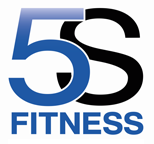 The Back Squat is often seen as the “Godfather” of the squats and rightfully so… The positioning of the weight on the upper back allows for a large weight to be stacked, heavily loading the Posterior Chain (Hamstring, Glutes, Spinal Erectors)
The Back Squat is often seen as the “Godfather” of the squats and rightfully so… The positioning of the weight on the upper back allows for a large weight to be stacked, heavily loading the Posterior Chain (Hamstring, Glutes, Spinal Erectors)
Other Squat variations such as Front Squat/Goblet Squat/Zercher Squat etc have massive training benefits… The Goblet Squat is my personal favourite for clients, however no squat comes close to the load you will achieve during a heavy back squat. (Squats which involve holding weight to the front of the body will naturally place a lot of the load on the Quadriceps)
Here’s a few tips on how to Back Squat:
(Remember, there’s not always 1 right way to do it… Its absolutely fine to adapt an exercise as long as we understand the pros and cons/risks of doing so)
- When taking a bar of the rack, a common mistake is to just grasp the bar, bend the head underneath (resting bar on traps) and raise the bar from there… However this will massively load the lower back… Once you have placed the bar on the traps its key to step forward, right under the bar, allowing you to lift the bar of the rack using the legs. (As shown in picture)
- High and low Bar Positions (We are talking about a few inches… But it all makes a difference) A high bar position (Olympic Squat) (On the top of the traps) will allow for a much more vertical back position, therefore allowing for a much deeper squat position – This is key for Olympic lifters and people who want to perfect an “Ass to grass” squat position.
- The Low bar position (Held a few inches lower on the traps – My position of choice) is going to reduce the range of movement in comparison to a high bar position… It will really emphasise the load on the Posterior Chain and will often allow the lifter to achieve a much heavier weight. (Due to the low bar position allowing the lifter to keep the shins more vertical/Knees back, its a much better option for individuals who suffer with knee pain.
- Standing at various widths will transfer the load onto different areas of the legs, however standing with the heels shoulder width apart (Or slightly wider) with the toes pointing forwards or angled slightly outwards (Around 30 degrees) is ideal. (We have to take into consideration an individuals skeletal anatomy… Not every ones hip joint is built the same and some may be suited to a different heel width/foot placement)
- Pull the elbows forward and push the chest out – This will keep the Thoracic Spine in good posture. Bringing the hands closer in to the shoulders will also help to maintain a strong upper back position.
- Initiate/start the movement at the hips (Hinging at the hips – Push Glutes rewards/Anteriorly tilting the pelvis) keeping the core braced – This will allow sufficient load to be placed on the heels. It will engage the muscles of the posterior chain and allow the knees to maintain a more rearwards position, resulting in less pressure being placed through them. Often when a lifter is trying to achieve depth with a high bar position, they may initiate the movement with a hinge of the knees… This is fine as long as the lifter is able to deal with the added strain caused by the knees shifting forward.
- As you squat keep the core braced and push the knees outwards – If the knees fall in during the squat you should work on developing your Hip Abductors – Specifically Glute Medius/Minimus (Squatting & Side walking with a resistance band between the knees is a great way to develop these muscles)
- Keep the whole body tight throughout the movement and drive that weight up… Get Squatting!
